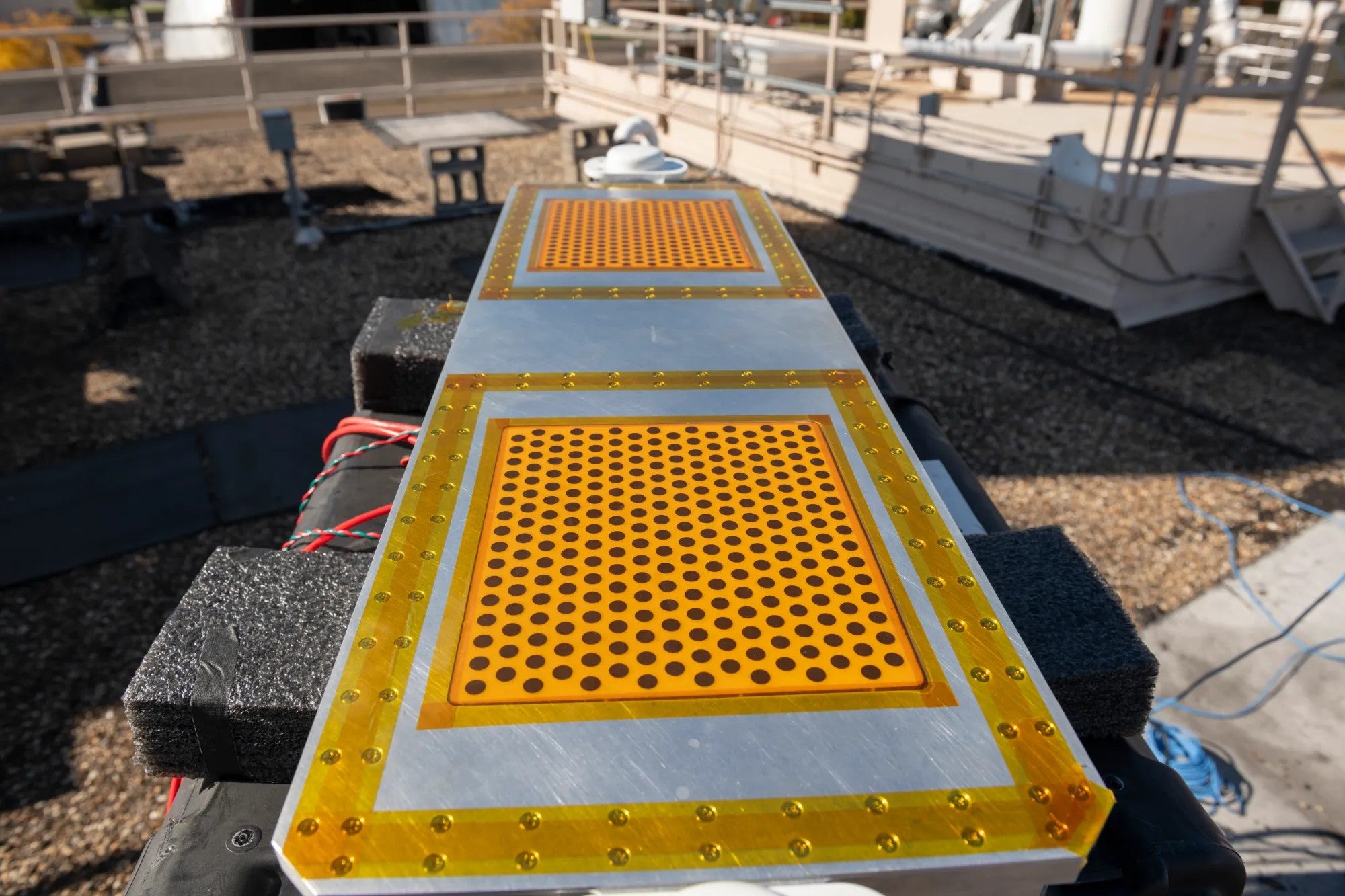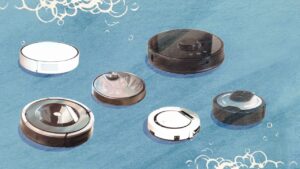Engineers at NASA are developing a solution to address the potential for “dropped calls” in drones, self-flying electric vertical takeoff and landing (eVTOL) air taxis, and other future aircraft.
The space agency on Tuesday said that by the end of the year, researchers aim to design, build, and test what it describes as an “active phased array aerogel antenna” that can be embedded under an aircraft’s skin. The idea is to address communication delays and losses in aircraft, which typically communicate with ground stations using signals transmitted via satellite relay.
NASA’s aerogel-based antenna, by contrast, uses radio waves that can be “electronically steered” to prevent disruptions in flight. The space agency says the “ultra-lightweight” technology can be installed without sacrificing power, weight, or space.
“By removing the liquid portion of a gel, you’re left with this incredibly porous structure,” said Stephanie Vivod, a chemical engineer at the NASA Glenn Research Center in Cleveland, in a recent update. “If you’ve ever made Jell-O, you’ve performed chemistry that’s similar to the first step of making an aerogel.”
The innovation has potential to improve the safety of drone or eVTOL operations, which are expected to operate in urban, highly populated areas. In Dallas-Fort Worth, for example, drones are already delivering food, pharmaceuticals, and other cargo to customers’ doorsteps. As soon as this year, eVTOL air taxi manufacturers Archer Aviation and Joby Aviation aim to launch home-to-airport services in cities such as New York and Los Angeles.
“If an autonomous air taxi or drone flight loses its communications link, we have a very unsafe situation,” said Bryan Schoenholz, a researcher at Glenn. “We can’t afford a ‘dropped call’ up there because that connection is critical to the safety of the flight.”
NASA’s new antenna concept is built from an aerogel composed of polymers. The aerogel is sandwiched between a circuit board and thin copper cells, then wrapped in a layer of electrical insulation film. The antenna itself “looks like a honeycomb but lays flat on an aircraft’s surface,” reducing drag.
Notably, the aerogel, one of the world’s lightest solid materials, has an air content of 95 percent, making it lightweight and strong, yet flexible. By adjusting its properties, users can achieve the “flexibility of plastic wrap or the rigidity of plexiglass,” NASA says. It can also be modified to reduce signal interference.
Glenn researchers last year evaluated a rigid version of the antenna, partnering with the U.S. Navy to flight test it on a Britten-Norman Defender at Naval Air Station Patuxent River in Maryland.
More recently, they teamed with Eutelsat America to test a ground-bound variant, which successfully beamed a signal to a Eutelsat satellite in geostationary orbit (GEO). In another test, the antenna managed to connect with a constellation of communications satellites operated by Kepler in low-Earth orbit (LEO). GEO satellites orbit an order of magnitude higher above the Earth than LEO satellites and fly at much faster speeds.
“This is significant because we are able to use the same antenna to connect with two very different satellite systems,” Schoenholz said
The objective, NASA says, is to test a flexible version of the antenna that could be installed on drones or self-flying air taxis.
The work is being funded by NASA’s Antenna Deployment and Optimization Technologies (ADaPT) initiative under the space agency’s Transformational Tools and Technologies (TTT) project. TTT, part of the Aeronautics Research Mission Directorate, is tasked with developing experimental systems that could help predict how future aircraft may perform in flight.
Other recent projects under the TTT banner include a specially designed pod to help self-flying aircraft “see” their surroundings and a test campaign that analyzed air flows generated by Joby’s eVTOL air taxi.
Credit: flyingmag.com











